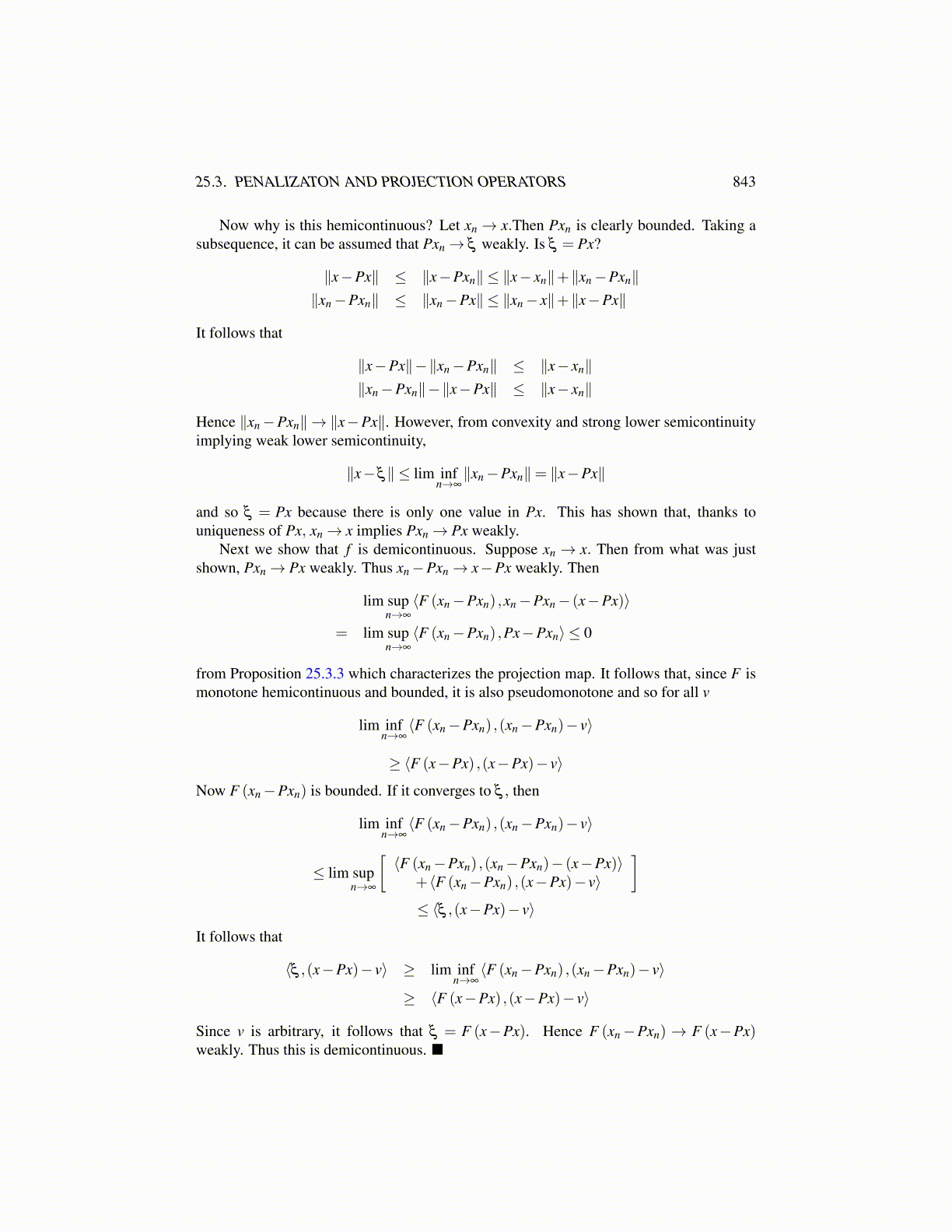
25.3. PENALIZATON AND PROJECTION OPERATORS 843
Now why is this hemicontinuous? Let xn → x.Then Pxn is clearly bounded. Taking asubsequence, it can be assumed that Pxn→ ξ weakly. Is ξ = Px?
∥x−Px∥ ≤ ∥x−Pxn∥ ≤ ∥x− xn∥+∥xn−Pxn∥∥xn−Pxn∥ ≤ ∥xn−Px∥ ≤ ∥xn− x∥+∥x−Px∥
It follows that
∥x−Px∥−∥xn−Pxn∥ ≤ ∥x− xn∥∥xn−Pxn∥−∥x−Px∥ ≤ ∥x− xn∥
Hence ∥xn−Pxn∥ → ∥x−Px∥. However, from convexity and strong lower semicontinuityimplying weak lower semicontinuity,
∥x−ξ∥ ≤ lim infn→∞∥xn−Pxn∥= ∥x−Px∥
and so ξ = Px because there is only one value in Px. This has shown that, thanks touniqueness of Px, xn→ x implies Pxn→ Px weakly.
Next we show that f is demicontinuous. Suppose xn → x. Then from what was justshown, Pxn→ Px weakly. Thus xn−Pxn→ x−Px weakly. Then
lim supn→∞
⟨F (xn−Pxn) ,xn−Pxn− (x−Px)⟩
= lim supn→∞
⟨F (xn−Pxn) ,Px−Pxn⟩ ≤ 0
from Proposition 25.3.3 which characterizes the projection map. It follows that, since F ismonotone hemicontinuous and bounded, it is also pseudomonotone and so for all v
lim infn→∞⟨F (xn−Pxn) ,(xn−Pxn)− v⟩
≥ ⟨F (x−Px) ,(x−Px)− v⟩
Now F (xn−Pxn) is bounded. If it converges to ξ , then
lim infn→∞⟨F (xn−Pxn) ,(xn−Pxn)− v⟩
≤ lim supn→∞
[⟨F (xn−Pxn) ,(xn−Pxn)− (x−Px)⟩
+⟨F (xn−Pxn) ,(x−Px)− v⟩
]≤ ⟨ξ ,(x−Px)− v⟩
It follows that
⟨ξ ,(x−Px)− v⟩ ≥ lim infn→∞⟨F (xn−Pxn) ,(xn−Pxn)− v⟩
≥ ⟨F (x−Px) ,(x−Px)− v⟩
Since v is arbitrary, it follows that ξ = F (x−Px). Hence F (xn−Pxn) → F (x−Px)weakly. Thus this is demicontinuous.